The Key of Material Handling in Industrial Operations
By implementing the right mix of material handling equipment, companies can boost productivity, enhance safety, and reduce operational costs.
 Effective material handling is the cornerstone of modern industrial operations, ensuring that raw materials, work‑in‑progress, and finished goods flow seamlessly through manufacturing, warehousing, and distribution. This comprehensive guide explores the importance of material handling, examines essential lifting solutions such as lifting clamps, vacuum lifters, slab lifters, and scissor lifters, and provides best practices for integrating systems like the gantry crane and jib crane. We’ll also cover safety accessories like ratchet tie down straps and explore trends shaping the material handling industry.
Effective material handling is the cornerstone of modern industrial operations, ensuring that raw materials, work‑in‑progress, and finished goods flow seamlessly through manufacturing, warehousing, and distribution. This comprehensive guide explores the importance of material handling, examines essential lifting solutions such as lifting clamps, vacuum lifters, slab lifters, and scissor lifters, and provides best practices for integrating systems like the gantry crane and jib crane. We’ll also cover safety accessories like ratchet tie down straps and explore trends shaping the material handling industry.
Understanding Material Handling and Its Importance
Material handling encompasses all activities related to the movement, storage, protection, and control of materials from point of origin to point of consumption. In essence, handling material effectively means optimizing every touchpoint—from raw-material receipt to final dispatch—to support continuous, safe, and cost‑efficient operations.
The Scope of Material Handling
-
Inbound Logistics: Unloading, inspecting, and transporting raw inputs to storage or production lines.
-
Production Support: Delivering components to workstations using conveyors, forklifts, or automated guided vehicles (AGVs).
-
Storage & Warehousing: Managing inventory via racks, automated storage/retrieval systems (AS/RS), and pallet jacks.
-
Outbound Logistics: Picking, packing, and staging finished products for shipment.
Efficient material handling reduces cycle times, minimizes damage, and ensures that products reach customers on schedule.
Benefits of Efficient Material Handling
-
Increased Productivity
Streamlined workflows eliminate bottlenecks. Automated lifting equipment and conveyors move materials swiftly, reducing idle times on the factory floor. -
Enhanced Safety
Using devices like lifting clamps and slab lifters minimizes manual lifting, lowering the risk of musculoskeletal injuries. Properly secured loads and trained operators further protect workers. -
Cost Reduction
Although investments in advanced equipment—such as vacuum lifters and scissor lifters—can be substantial, the long-term savings from reduced labor costs, damage, and downtime yield a strong return on investment. -
Quality Assurance
Non‑contact handling with a vacuum lifter prevents surface blemishes on sensitive materials, reducing scrap rates and rework. -
Scalability and Flexibility
A robust material-handling equipment ecosystem can adapt to fluctuating production volumes, new product lines, and facility expansions, ensuring long‑term operational resilience.
Essential Material Handling Equipment
Choosing the right tools is critical for addressing the diverse demands of modern industry. Below are key categories of lifting equipment and their typical applications.
Lifting Clamps: Mechanical Versatility
Lifting clamps are mechanical devices that grip materials securely, ideal for loads without standard lifting points. Typical uses include:
-
Steel Fabrication: Plate clamps for moving steel sheets safely.
-
Construction: Beam clamps for handling heavy structural components.
-
Woodworking: Panel clamps for transporting large boards.
Advantages
-
No external power required—purely mechanical action.
-
Adjustable grip accommodates various material thicknesses.
-
Durable design suited for harsh, heavy‑duty environments.
Vacuum Lifters: Damage‑Free Handling
Vacuum lifters harness suction to lift and transport smooth, non‑porous loads without scratching or denting them. Key industries include:
-
Glass Manufacturing: Moving fragile panels safely.
-
Metalworking: Handling sheet metal with minimal contact.
-
Composite Fabrication: Transferring delicate composite panels.
The vacuum lifter can handle loads up to 1,000 kg and offers precise rotation and tilt, making it indispensable for tight-production cells.
Slab Lifters: Stability for Large, Flat Materials
For heavy, flat materials—like granite, quartz, or precast concrete—a slab lifter provides:
-
Multi‑Point Gripping: Even distribution of weight prevents tipping.
-
Automated Locking: Ensures the load remains secure during transit.
-
System Compatibility: Integrates seamlessly with cranes, forklifts, and automated systems.
Slab lifters are foundational in stone fabrication, countertop manufacturing, and precast concrete facilities.
Scissor Lifters: Precision Vertical Control
Scissor lifters employ a cross‑braced mechanism to offer stable vertical motion. Ideal scenarios include:
-
Assembly Lines: Adjusting workpiece height for ergonomic tasks.
-
Loading Docks: Matching platform heights to truck beds.
-
Maintenance Areas: Elevating equipment for service work.
The scissor lifter delivers reliable, precise height adjustments, reducing operator fatigue and enhancing throughput.
Overhead Solutions: Gantry and Jib Cranes
Overhead lifting systems maximize floor space and cover large work areas:
-
Gantry crane: A bridge supported by freestanding legs that travels on rails, ideal for outdoor yards and expansive workshops.
-
Jib crane: A rotating arm mounted to walls, floors, or ceilings, suited for localized lifting within a defined radius.
These systems offer high lifting capacities and smooth material flow, reducing reliance on manual transport methods.
Integrating Equipment for a Cohesive System
Achieving peak performance in material handling requires harmonizing different devices into an integrated workflow.
Workflow Mapping and Equipment Placement
-
Path Optimization: Analyze material flow to position cranes, lifters, and conveyors strategically, minimizing travel distances.
-
Zone Segmentation: Allocate zones for delicate handling (e.g., vacuum lifter areas) and heavy staging (e.g., slab lifter bays).
-
Automation Synergy: Interface AGVs, robotics, and AS/RS with lifting equipment to automate repetitive tasks and free operators for higher‑value work.
Safety and Compliance
-
Load Testing & Inspections: Conduct routine proof tests and structural inspections to verify rated capacities.
-
Operator Certification: Ensure staff are trained and certified for each type of equipment—whether a lifting clamp, scissor lifter, or overhead crane.
-
Secure Transport: Use ratchet tie down straps to stabilize loads on trailers or mobile platforms, preventing shifts and accidents.
Best Practices for Material Handling Operations
Implementing industry‑leading practices ensures sustained efficiency, safety, and cost control.
Preventive Maintenance
-
Scheduled Servicing: Adhere to manufacturer guidelines for lubrication, filter changes, and mechanical inspections.
-
Spare Parts Management: Stock critical components—seals, hoses, filters—to minimize downtime.
-
Condition Monitoring: Leverage IoT sensors to track equipment health and schedule maintenance before failures occur.
Lean and Continuous Improvement
-
Value Stream Mapping: Identify and eliminate non‑value‑adding movements to streamline workflows.
-
Kaizen Workshops: Engage cross‑functional teams in rapid‑cycle improvement events to resolve bottlenecks.
-
Performance Metrics: Monitor throughput, utilization, and safety incidents to guide ongoing optimization.
Training and Organizational Culture
-
Comprehensive Training: Provide hands‑on instruction and certification for all devices.
-
Safety Mindset: Foster a culture where near‑miss reporting and proactive hazard identification are encouraged.
-
Cross‑Skill Development: Train staff on multiple equipment types to enhance operational flexibility.
Emerging Trends in the Material Handling Industry
The material handling industry continues to evolve, driven by technological innovation and shifting market demands.
Automation and Robotics
-
Collaborative Robots (Cobots): Work alongside humans for pick‑and‑place tasks, integrating with conveyors and lifters.
-
Automated Guided Vehicles (AGVs): Transport materials autonomously between workstations, interfacing with overhead cranes and AS/RS.
Smart Equipment and IoT
-
Real‑Time Monitoring: Embedded sensors provide alerts on load strain, temperature, and vibration, enabling rapid response.
-
Predictive Analytics: Machine‑learning algorithms forecast maintenance needs and optimize asset utilization.
Sustainability and Green Logistics
-
Energy‑Efficient Drives: Variable frequency drives (VFDs) reduce power consumption of cranes and lifters.
-
Eco‑Friendly Materials: Use of recyclable components and biodegradable lubricants minimizes environmental impact.
Conclusion
Mastering material handling in industrial operations requires a strategic approach—aligning load profiles, facility constraints, and productivity goals with the right blend of lifting equipment. By incorporating tools such as lifting clamps, vacuum lifters, slab lifters, scissor lifters, and overhead systems like gantry cranes and jib cranes, organizations can:
-
Enhance Throughput and Safety
-
Reduce Operational Costs and Damage
-
Achieve Scalable, Flexible Workflows
Pairing these solutions with preventive maintenance, lean methodologies, and continuous improvement fosters long‑term operational excellence. Embrace automation, IoT‑enabled equipment, and sustainability initiatives to stay ahead in the dynamic material handling industry. With informed investments and a commitment to safety and innovation, your operations will handle materials more efficiently, safely, and profitably for years to come.




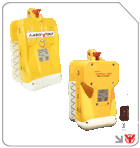
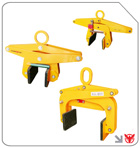
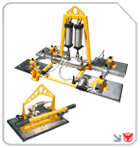
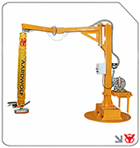
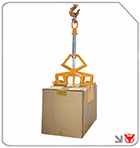
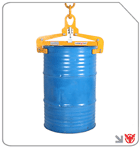
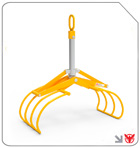
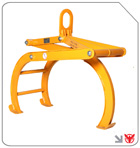
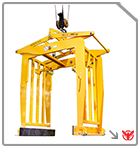
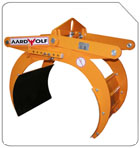
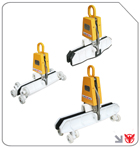
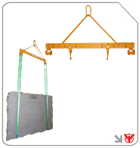
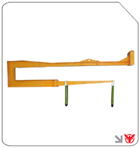
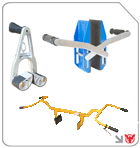
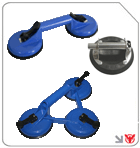

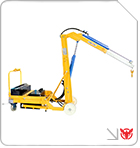
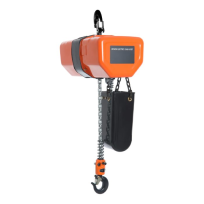
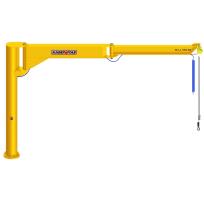
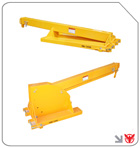
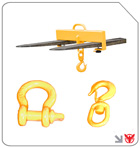
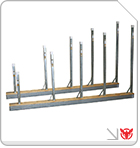
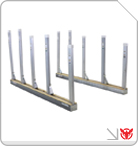
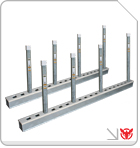
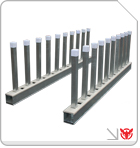
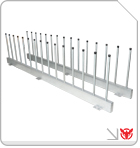
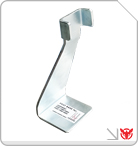
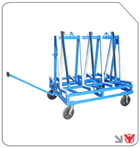
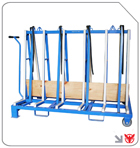
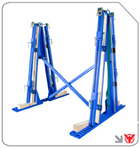
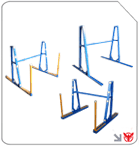
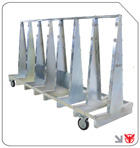

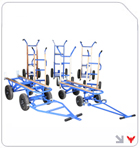
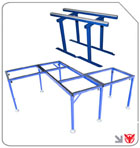
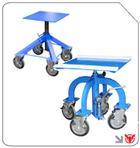
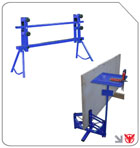
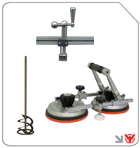

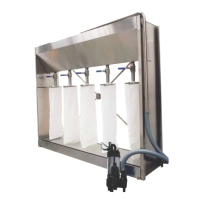
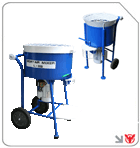
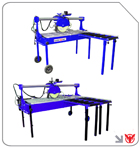
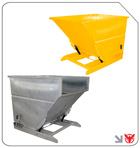
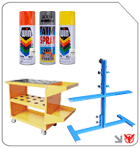

Follow us on: